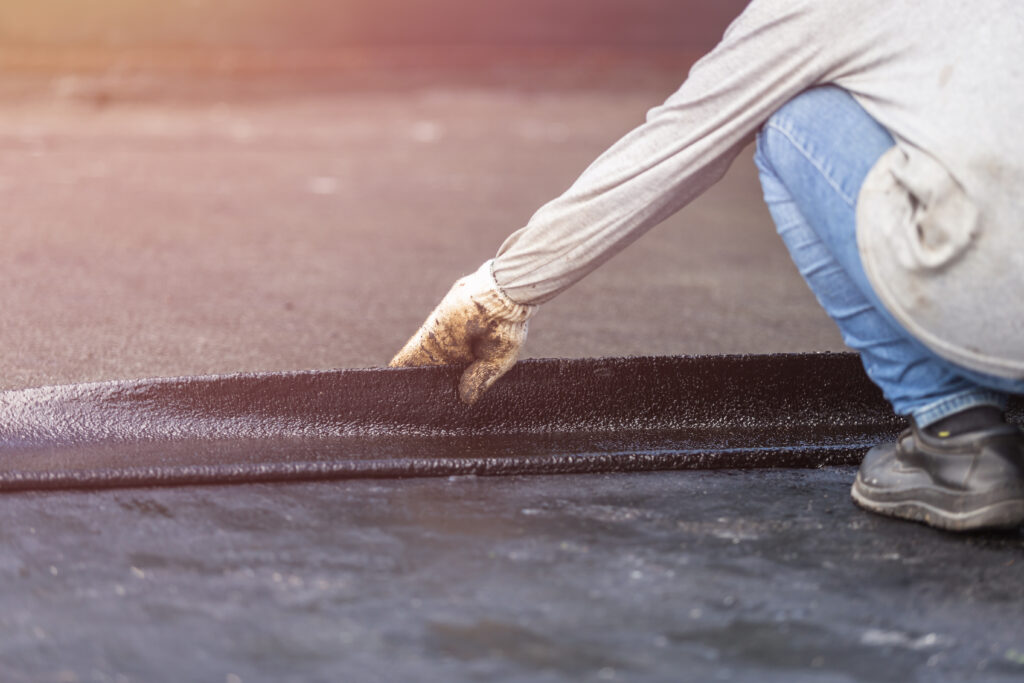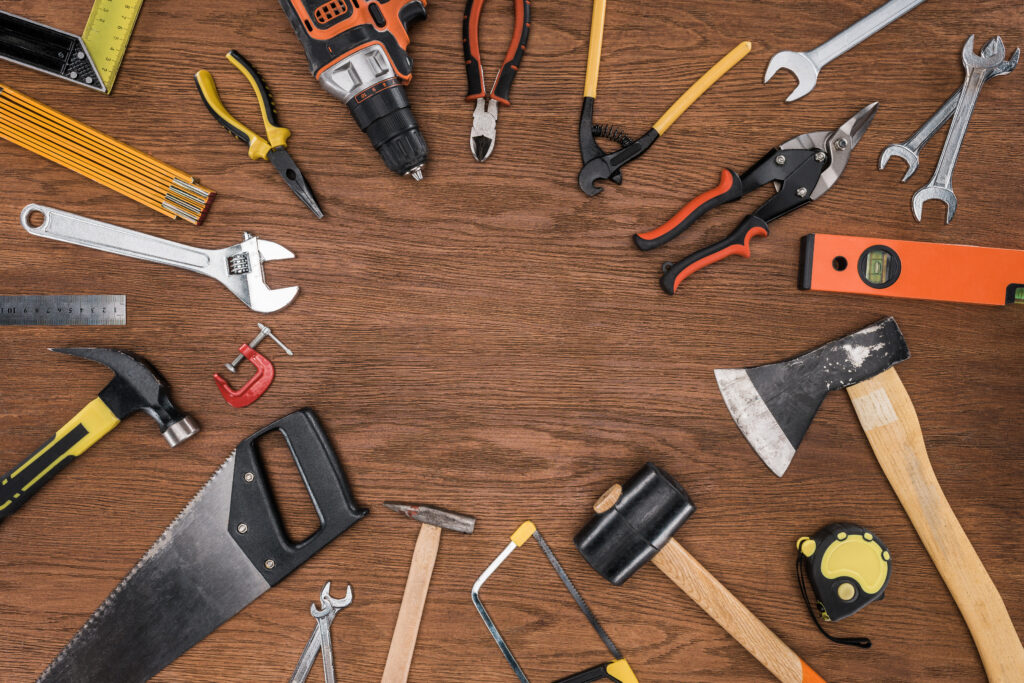Flat Roof Installation: lead-in information
Reading Time: 5 minutesLet’s discuss installing a new roof and replacing worn-out material with modern EPDM membrane coverings. Depending on the covering type and architectural features, a flat roof can reliably protect the house from leaks and bad weather for 15 or even 50 years. To achieve maximum service life and enjoy almost zero-maintenance roofing, you should pay attention to professional flat roof installation in the first place.

Flat Roof Installation Process: Where to Begin
Building owners ask for flat roof installation in several cases.
- It could be the roofing project of a newly built commercial or residential building.
- A flat roofing surface gets installed during a partial renovation.
- A damaged roofing surface is one more reason for new roof installation.
The main task of mounting any flat roof is to get a reliable structure that will shield the interior of the building from leaks, heat loss, and street noise.
It is necessary to consider the selected roofing material, the degree of damage (if you’ve noticed it), the type of roof, and other factors at the initial stage to achieve the mentioned goals. In addition, you’ll surely need equipment and tools while installing or replacing any roof.
Attention! Roof installation is a complex task requiring compliance with safety rules for working at height and roofers’ skills. If you are going to install a new roof, replace most of the roofing material or repair the roofing frame, we recommend contacting professional roofers.
What tools are needed to complete an installation?
Let’s examine the essential tools needed to install or replace an EPDM-coated flat roof. A complete set of tools depends on many factors. Like the type of work you will do, type of roof structure and roofing pie, preferred roofing material installation approach, and other nuances.
- Despite the flat roof surface looking safe, in some cases, it is necessary to use safety equipment.
- Safety wear, including glasses
- Hammer, knife
- Roller for applying adhesive
- Measuring tape
- Pry bar and spade (if demolition work is required)

In addition, you will need a set of materials to replace your flat roof:
- Roofing material. In our case, this is a single-ply EPDM (ethylene propylene diene monomer) membrane.
- Insulating material suitable for the selected roof type and local insulation requirements
- Adhesive. As a rule, roofers use water-based adhesive. Follow the manufacturer’s recommendations for the adhesive for selected materials.
- Joints, pry bar, roofing timber
- Copper flashing
Flat Roof Installation: several common types of flat roofs
There are several types of roofs depending on structural features (roofing pie), thermal insulation, waterproofing, and roofing.
- Cold (insulation is between joints)
- Warm (insulation is above the joints)
- Inverted (with waterproofing membrane beneath the insulation)
- A hybrid type of flat roof (with additional thermal insulation)
There are also curved, tapered, green, and other flat roofs.
Each kind of roof has its installation features. You can get detailed information about the methods of roof installation, depending on their type, from professional roofers.
Flat Roofing Installation: replacing an old roof
If you plan to install a new roof, you should start with dismounting.
Carefully remove the gutters and fascia before starting dismantling work. Do not damage anything you need later, including flashing, trim, or valley. On the other hand, tear off all the old material needing repair up to the sheeting around the roof perimeter.
Inspect the condition of the roof beneath. You should check the roof frame and underlayment. If you notice standing water, signs of rot, or mold, you may need to replace the wooden elements or underlayment. If the roof frame is acceptable, you can install a new roof.

Installing a Flat Roof Membrane: EPDM
You can find many flat roof materials in local or online stores – for example, modified bitumen or BUR roof systems. There is a wide range of options even among the single-ply membranes – the abovementioned EPDM, as well as PVC and TPO (thermoplastic polyolefin). Each material has its own time-tested pros and well-known cons.
Advantages of EPDM materials:
- Inexpensive
- Sealed
- Durable
- Easy to mount
Please note that different brands of EPDM roofing membranes are available in the US market. They differ in width, length, thickness, and color.
If your budget allows, choosing the thickest possible membrane is better, as it is more durable. If an energy-efficient option is one of your priorities, then it is better to choose a light gray or white coating instead of a black EPDM membrane.
Step-by-Step EPDM Roof Installation Guide
- Clearing debris, protruding nails, and old roofing material prepare the roof surface.
- Since you measured the roof beforehand, you already know how much material you need.
- Place the material in the center of the roof. Spread rolled-up membranes for some time to take the required shape.
- Apply adhesive following the manufacturer’s recommendations. It can be one-component or two-component. It is advisable to choose a chemically safe water-based adhesive. It all depends on the type of adhesive, but generally, you need to cover the whole surface prepared for installation with adhesive.
- Install the adhesive roofing membrane over the areas and ensure no air bubbles are under the membrane. In most cases, membranes are easy to install.
If you are installing a new roof from scratch, then before Step 1, you need to mount the roof frame, attach the plywood sheathing, and attach the underlayment on the plywood. After that, you can lay the membrane material.
Pay particular attention to the installation of copper flashings on the front edge, as well as gutters.
FAQ: Average Cost and Free Estimates
Usually, costs vary between $3,500 and $15,000 (for residential roofing) in 2023. In other words, the materials and labor costs per square foot are from $5 to $10. The price tag is much higher for commercial real estate of a large area – from $20,000 to $90 000.
The final estimate of installing a flat roof depends on the area of the object, the structural type of roof, the roofing pie, chosen roofing material, and the pricing policy of the roofers.
If you’re looking to repair or renovate a small roofing area and are confident with your skills, tools, and experience, you can save money by doing the work yourself. However, we recommend contacting professionals if you need a complete replacement, roof installation from scratch, or a significant repair. The recommendation is the same if you don’t know how to install a flat roof.
If you do the installation independently, the flat roof installation cost depends on materials and delivery costs. If it’s high time to replace a roof and you want to contact If you do the installation independently, the flat roof installation cost depends on materials and delivery costs. If it’s high time to replace a roof and you want to contact a roofing contractor, visit their website and use the online calculator (the online calculator shows an approximate cost), or request a detailed flat roof replacement cost estimate. Usually, both are free.
Denis is the driving force behind ID Flat Roof, a leading company in Boston specializing in flat roof repair and installation for over 20 years.
Expertise:
Denis excels in PVC, TPO, EPDM, and rubber roofing. His meticulous approach ensures quality and customer satisfaction.
Innovation:
Denis incorporates cutting-edge solutions like skylights and solar PV roofing.



